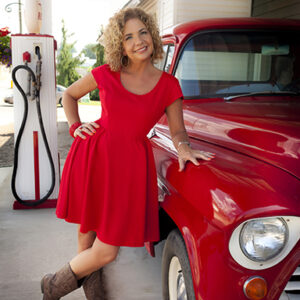
High oil prices this winter mean families using propane or heating oil, both petroleum-based products, could face a pricey winter. In the Midwest, the average heating winter bill will run more than $2,100 — 26 percent above last winter, according to the Energy Information Administration (EIA). The hurricanes battering the Gulf Coast may also lead to higher fuel costs, as Hurricane Katrina did in 2005. The Gulf’s offshore crude oil production accounts for about a quarter of total U.S. production. The region also produces a substantial portion of the nation’s natural gas. So, if you are thinking about buying or upgrading your wood heating stove, now is the time to do it!
Depending on the style, size and accessories you choose, a wood stove can cost between $500 and $3,000. Accessories — which include firestarters to get the blaze going, a heat-powered fan to pump warm air through your home, and a hearth tool set — are easy to find and affordable; and the fuel to run one — fallen trees and chopped-up logs — is inexpensive and readily available. You do the math — if you can save $500 per winter by using wood heat as a secondary source for your home, you can amortize the cost of your stove in three to five years. If you use only wood heat, that number drops to two years or less.
As with any product, there are a few things you should know before you buy a wood heating stove.
- Buy the right size stove and chimney for your home.
People often purchase too powerful a stove for their home. An oversized stove is a potential fire hazard, because it’s often operated in an extremely “slow fired” condition, which leads to creosote buildup. And that increases the risk of chimney fires. Ask yourself two questions.
- How much heat should it supply: enough for one room, or the whole house?
- Where do you want to install it?
Your stove will need a professionally installed chimney that is safe and efficient. Even if your current home has a chimney, it might not be the right size and this could add substantial expense to your stove purchase. Chimneys can vent through the roof, or through an outside wall, but it is important to get the proper chimney for your stove.
- Burn seasoned hardwood.

Heavy–Duty Splitting Maul Hardwoods are generally broad-leaved deciduous trees which carry their seeds in seedcases. Softwoods are generally conifers, like pine trees. When burned, softwoods produce more creosote and tar than hardwoods. This material deposits in the chimney, partially blocking it and increasing the fire risk. Therefore, use hardwoods whenever you can.Season your wood before burning. Up to 50% of the weight of green wood can be moisture, which has to be burned off before heat can be released into your house. Seasoned wood burns hotter and more efficiently, helps decrease the amount of creosote buildup in your stovepipe, and saves you money.
Depending on how much sun and wind your woodpile gets, it can take a year or more to season your wood. This means you have to plan ahead. You should always be chopping and stacking one year in advance, unless you have another source or you plan to buy firewood.
Seasoned wood is lighter and grayer than green wood — you can feel the difference just by picking up a log.
- Take care of it and your stove will last a lifetime.

Magnetic Stovepipe Thermometer Make your fires small and hot. This burns volatile gases more quickly, producing fewer safety hazards and air quality problems than a fire that is big but smokey. Smaller, hotter fires mean more frequent loading and tending the stove…but the improved efficiency and air quality are worth the effort.
Install a stack thermometer on the stove flue. This will help you monitor the temperature of the gases as they leave the stove. Optimum range for most efficiency and least pollution: about 300° to 400° F.
Inspect your stove. Once or twice a year, depending on how often it’s used, your entire stove and chimney should be inspected. Look for warping, check the baffle to make sure there are no gaps, check for creosote. Your dealer can make regular inspections, and so can a chimney sweep.
Buy the most efficient design you can afford. It’ll pay for itself in the long run.

Efel S33 Wood Heat Stove Research has made great strides in designing fireboxes, drafts, catalytic combustors and other devices that improve combustion and reduce smoke. Maybe it’s time to retire that old “smoker” and modernize. And get it professionally installed!
Burn only the proper fuel. Don’t burn coal in a wood stove, for example, unless your stove was designed to handle both wood and coal. Trash shouldn’t be burned in your stove either. It’s not an incinerator — it’s a heater.
And finally, enjoy it. After all, your children won’t have fond memories of sitting around the furnace playing board games. But they will always remember the distinctive, homey ambiance of the wood stove.































Thank you Glenda. I’ve enjoyed your article. However, I feel the necessity to quibble (what a neat word!) concerning your second point. Hang in there with me!
Glenda writes:
> 2) Burn seasoned hardwood.
While the use of pine, and the like, is all but universally discouraged; I’d like to promote the thought that it *can* be used very safely, as a primary fuel, when reasonable forethought is applied. There are products and techniques for managing creosote and a little more agressive chimney cleaning schedule is quite doable for those with the intestinal fortitude required by the steeper roof pitches.
Note: Folks- Be Safe!
Have a friend, neighbor, child (Mom! Dad fell off the roof again!) or your significant other available, in a supervisory capacity, while cleaning chimneys. You’re welcome to ignore any advice they may offer! You’re only interested in their ability to fetch help if required.
I ask only that you consider that the only thing worse than coming loose from the roof, and living to tell the tale, is having to lay there and reflect on how “rubbery” you used to be- while waiting for someone to notice you’re no longer on the roof.
Also, while I have your attention, old bricks where made to line strawberry beds- not clean chimneys.
‘nough said.
Free Fuel! (or Wade squeaks when he walks . . . whichever.)
There’s a source of *free* pine that most folks underutilize or don’t consider. Hit the yellow pages and research what you have for “truss” companies (no- truss as in “roof truss” or “rafter”) in your area. Some will have found alternative uses for their waste, but it’s been my experience that they often welcome people who will take the scrap wood- if they don’t make a mess of the piles and are polite about it.
Collecting up the bits ‘n’ pieces can be a little dirty as there is often a notable quantity of sawdust mixed in. However, the scrap tends to be close to “stove length” and the moisture content is such that seasoning isn’t required.
Another quick note:
Folks- scrap “two by”, from the truss company, will not have a zero moisure content anymore than the materials you’d purchase from your local home impovement store. This is a good thing!
Don’t (that’s spelled: “never, never ever”) burn the lathe, and similar scrap, from Great Aunt Mattie’s 18th century farmhouse remodel in your stove! It’s so very dry that you’ll have an uncontrollable burn and the whole point of owning fire extinguishers is to *not* have to use them.
And that’s enough mischief for one morning. Now, where did I leave my coffee . . .
We live in a very large old, 113 year, house. We are slowly getting it insulated but we are 61 and 71 and getting tired of doing it. We fill our propane tank every month and it is now $2200.00 each month to heat the downstairs to 62 degrees. We are finally, after several years of asking, looking into an outdoor wood stove. A blue forge is our choice right now. We are getting it done, just very slow. It is expensive and we are getting old.
siecohe3 writes:
>$2200.00 each month to heat the downstairs to 62 degrees
Holy Smokes! That’s US Dollars? That’s a very large, insulation-challenged, old house!
Question- Is all of that downstairs living space?
When we get into the -20 F and lower, for any real length of time, we’ll shut down the majority of the basement for the duration. It can be a bit of an inconvenience but the emphasis shifts from keeping things “livable” to keeping things above freezing- and that’s much easier to do.
I’m a tad surprised you aren’t burning wood or coal indoors. Was there a chimney that was taken out at some point? I’ve seen a lot of homes where everything was removed past the attic or roof line. That’s quite repairable and you’re back to square one if you have the remaining 90% of “original” chimney sleeved.
Do you have a wall with a southernly exposure? If you do, there’s all sorts of passive solutions, that you can easily (and inexpensively) accomplish, that’ll cut into that propane bill. I’m a big proponent of the additive effect- several little things have a better cumulative result than any single solution. There is also the added bonus of redundancy should something go to heck along the way. Yup, we still have children at home and “Murphy” is a frequent house guest.
Wade, My husband had a house fire when he was a very young person. We have a very old stick house and he will allow no inside fires at all. I can see his point. We do have a fire place but the chimneys need relining so we will go outside with the wood stove. I do not mind doing that. We plan on putting it in the barn and running water lines underground to the house. Also we are building a sun room off the kitchen on the south side of the house. I would like to have a veritical windmill and some solar panels at some point. But as I said, we are getting up in years and do not know if any of our 6 children want to stay here. One son wants to but his wife to be does not. And she is strong willed. We have two floors and an attic and basement. We do not heat the attic or the second floor. Would like to at some point. We are in Illinois so have some serious winters here and lots of wind. A glass of water will some times freeze in the bedrooms. But working on things. I want to hire it done but that is pricy to do. I pray a lot about it. The son who wants to stay is our youngest so all have left the nest.
siecohe3 writes:
>Wade, My husband had a house fire when he was a very young
>person. We have a very old stick house and he will allow no inside
>fires at all. I can see
That’s nothing I have ever personally experienced, but I can understand how that would be tough getting past. With that said, there’s bound to be heat lost transferring between the barn and house. Not to mention what’s lost to heating the barn! Grab up a yellow legal pad, push the numbers around- and then do it again.
I’m no expert, and am working on sheer conjecture here, but it sounds like the payback on your investment is going to be a long way out there.
We live in Northwestern Minnesota, so I can sympathize with your winter experiences. Hopefully you’re not on the water! I spent a year in Euclid Ohio- right next to the lake. Wonderful during the summer. Winter winds, off the lake, were definitely a memorable experience!
A thought to consider, that will help to put your husband’s mind to ease, *after* you’ve gotten to the point where the house interior stays above freezing – residential fire sprinkler system. It’s an item on our to-do list that’s making its’ way to the top of the pile. If you choose to read up on it- it’s not necessary to plumb the entire house. The potential stale water problem is also easily overcome by plumbing the system into the commode or similiar “brief usage” appliance.
We cover “at risk” spots in the house with chemical extinguishers already, but they’re not much good if there’s nobody at home to use them.
How well sealed is the house envelope? Windows and outlets? Doors?
My wife and I have owned, and tightened up, a couple of old/drafty houses along the way. And your utility bill still floors me!
siecohe3 writes:
>We are slowly getting it insulated but we are 61 and 71 and
>getting tired of doing it.
Something that just occurred to me and should have occurred to me before! Need more coffee!
Grab up that legal pad, pick up the phone, and see what you can do with this:
Get to know the trade instructors by name at the local high schools and trade schools. They don’t always bite on this, but present your home as a learning opportunity for the students. Remodeling old homes is an industry unto itself. You will still spend the money on the insulation and associated materials- but not the labor.
Mention the idea of a “senior” project. This helps ensure you’re working with students who have some experience under their belt(s). If the instructor has done similar projects in the past, ask if you can contact the home owners in question. They should respond like a regular contractor to these sorts of questions.
Trade schools and community colleges are the *first* best choice as the students are paying tuition to learn. Not always the case, I’ve seen some really nice work come out of high school shops; but a reasonably generality.
Now, where’d I leave that coffee!
I would love to talk to the senior class and have mentioned that. I talked about that several years ago and got a resounding “NO”! It may go better now. Will try again.
I know the high school class builds complete homes so would feel alright about having them rewire and insulate and drywall here.
We would not be heating the barn. The room the wood stove would be in would be small and insulated. The barn is not all that far from the house and the water lines would be well wrapped to stay hot on the trip to the house.
The kitchen is on the north west side of the house and 20 degrees colder then the rest of the house. I would like a wood cook stove but hubby will just not have fire in the house.
siecohe3 writes:
>The kitchen is on the north west side of the
>house and 20 degrees colder then the rest
>of the house. I would like a wood cook stove
>but hubby will just not have fire in the house.
Sounds like there’s no hope for it then. Insulating (more) sounds like your best remaining option.
With that said, I worry far more about my wife and/or daughter leaving the curling iron running in the bathroom, when we leave the house in the morning, than I ever have been leaving the house with a fire banked in the stove. But then you could literally knock over my stove, on the floor where it sits, without fear of catching anything on fire. I rebuilt that area of the house, prior to installing the stove, and I’m a firm believer in the adage that “paranoia is your friend”. I am also an ardent practitioner of over-engineering. If one inch notably minimizes any misadventures – put in two inches . . . and an air gap!
Now all I need to do is replace everything flammable in the bathroom with concrete board, slate, quarry stone and steel. It’ll do nothing to remind the lady folk to unplug the curling iron- but I’ll get some peace of mind out of the process.
Good luck to you and let us know how things come together!